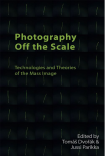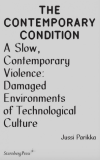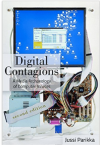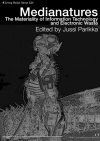Viral Capitalism – redux
Capitalism is sticky – it is able to attach to such a variety of objects, things, practices, and new fields that it almost seems to be productive in itself. Reading some interesting texts recently, I thought to pick up the concept of “viral capitalism” that I discussed in an earlier piece in 2005 and in Digital Contagions as an attempt to understand how it worked in relation to security politics of software in digital culture. Hence, it played the dual role of referring to virus cultures and anti-virus discourse, as well as pointing to a wider logic outside software of capitalism as that sticky, viral-like mode of spreading – not however just objects that are contagious, but environments, or milieus in which infection becomes possible. In such affective environments, capitalism as a sticky machine is able to operate. As part of the logic of security, then, it relates to how in milieus of (in)security , you are able to modulate affects, actions, practices and discourses so that you can get value even from risks, accidents and insecurity.
As such, one could say that an idea of viral capitalism relates to;
– the attraction power to which capitalism bases so much of its marketing power; this is the power of the affect to draw us in, to create worlds in which we feel natural to live in (capitalist worlds as leibnizian, as analyzed by Lazzarato). This is the aesthetic power of affect/attraction.
– Pass-on-power where social relations are in their already mimetic (Tarde) and infectious nature as if ready for appropriation into for instance marketing; (stay tuned for something we have written together with Tony Sampson – see his piece on Contagion Theory).
– The power of capitalism to turn even adversary practices as part of itself, directly or indirectly.
As a figure of network politics, viral capitalism functions in the aesthetico-technical regime.
An excerpt from Digital Contagions:
In a way, it seems as if capitalism invents such accidents and risks to keep itself busy. This idea that “if it’s not broken, break it” provides, then, an interesting way to approach the functioning of so-called information capitalism. Dangers and risks produce excellent needs and products in the consumer market, which aims to provide tools for controlling the uncertainties and anxieties of everyday life. The previous themes can be synthesized under the notion of viral capitalism, which stems from an idea of capitalism as capable of continuous modulation and heterogenesis. […]
The power of capitalism resides in its capability to appropriate the outside as a part of itself. In a sense, capitalism incorporates the ability to subsume heterogenesis as part of its production machinery, and heterogeneity is turned as part of the capital itself. In its functioning, capitalism is a continuing abstract machine of the new, inventing itself all the time, refusing to tie itself to any transcendent point (even though the actual workings of capital do constantly stop at some intervals of profit-oriented points, such as companies, corporations, and monopolies).
Of course, similar trends occurred in the cultural history of diseases long before viruses. As Nancy Tomes notes in her history of germs in America, the fear of microbes was, from the 1880s onward, turned into a lucrative business, with special goods and services designed for hygiene. This meant, for example, “safeguards against the dangers of sewer gas and polluted water, such as special toilet attachments and household water filters”, and on to antiseptic floor coverings and wall paint as well as sanitary dish drainers and fly traps. Hence, commodity interests were very active long before the media ecology of capitalist network culture.
Massumi argues that in information age capitalism, it is the circulation of things that counts, replacing their mere production as the key energetic principle of surplus value. This amounts to a change also in the commodity’s status where it becomes a self-organizing and living entity—a form of self-reproductive object. “The commodity has become a form of capital with its own motor of exchange (fashion, style, ‘self-improvement’) and cycle of realization (image accumulation/ image shedding (…)). Its value is now defined more by the desire it arouses than by the amount of labor that goes into it.”The commodity works as a virus— and the virus as part of the commodity circuit.
[…]
Luciana Parisi has made important remarks concerning the basis of information capitalism and the problems with Hardt and Negri. According to Parisi, the Empire becomes too easily a transcendent apparatus of power opposed to the creative virtualities of the multitude, which leads to a dualism of death and life, organic and inorganic. Instead, she proposes an endosymbiotic conception of capitalism, where it “exposes a machinic composition of molecular bodies involving continual and differential degrees of variation between bodies that capture and bodies that are captured.” Hence, she proposes an ongoing nonlinear symbiosis instead of a dualism. Capitalism, despite functioning as an apparatus of capture, does not proceed in a rigid manner of linear capture but proliferates differences in its wake. As Massumi writes, the rationality of neoliberalism works through a type of pragmatics, not perhaps so much through grounding principles or normative laws. Its cultivation of the metastable systems of markets and affects resides in its focus not on truth but on how the future (the unknown) can be managed on the basis of the data of the past (statistics). What matters is how to keep things running.


















I stumbled on this page because I had reached a similar conclusion and started to wonder if other people did it too. Funny how a deleuzean background can help different people to reach similar conclusions 🙂